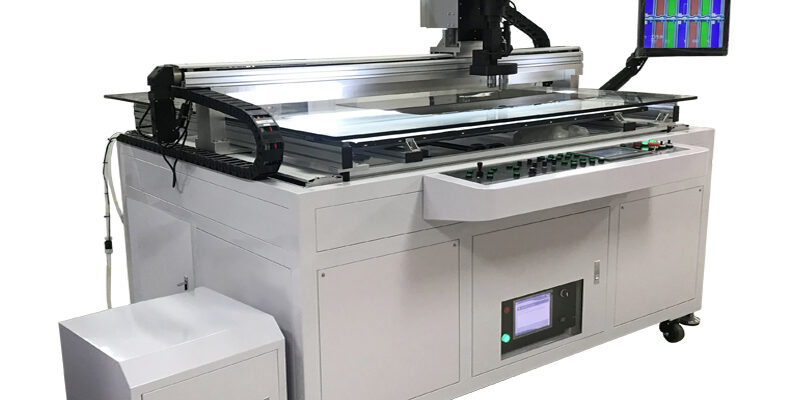1. What Is an LCD Laser Repair Machine?
An LCD laser repair machine is specialized equipment designed to repair defects and damage in LCD screens using precision laser technology. These machines are used by electronics manufacturers and repair shops to fix scratches, dead pixels, and other display issues. Whether in mobile phones, tablets, or computer screens, these machines are essential for extending the life of LCD displays.
2. The LCD Laser Repair Machine Market Overview
In 2024, the global market for LCD laser repair machines is growing as demand for screen repair solutions increases. The industry is seeing rapid innovation and increased production, especially in regions with established electronics manufacturing hubs. Today, prices range from as low as $5,000 to over $20,000 depending on machine features, making it easier for both small repair shops and large manufacturing facilities to find suitable equipment.
3. Key Factors Affecting LCD Laser Repair Machine Prices
When assessing the price of an LCD laser repair machine, there are several key factors to consider:
- Technical Specifications: Higher resolution, precision control, and faster processing capabilities often mean a higher price. Machines with advanced features are ideal for high-volume or complex repair needs but come at a premium.
- Brand and Model: Well-established brands often come with a higher price tag due to their reputation, quality assurance, and support services. Recognizable brands generally have extensive R&D behind their products, which adds to the machine’s value.
- Supply Chain and Market Demand: Supply chain fluctuations, material availability, and regional demand also impact the final price. High demand or supply constraints can drive up costs.
4. Typical Price Ranges for LCD Laser Repair Machines
There are three primary price tiers for LCD laser repair machines:
- Entry-Level Machines: Priced between $5,000 and $8,000, entry-level machines are suited for basic repair tasks and are ideal for smaller shops or individuals just starting in the repair business.
- Mid-Range Machines: Costing between $10,000 and $15,000, mid-range machines offer better precision and additional features like auto-focus and improved processing speeds, making them ideal for medium-sized repair businesses.
- High-End Machines: Starting at $15,000 and going up to $20,000 or more, high-end machines are designed for large-scale production environments and offer the highest levels of accuracy, automation, and efficiency.
5. Choosing the Right LCD Laser Repair Machine for Your Business
To make the best purchase, consider balancing price with performance. For instance, if you’re a small repair shop, an entry-level or mid-range machine might be sufficient. But if you handle a high volume of repairs, a higher-end machine can improve efficiency and help maximize profit.
A higher upfront investment in a top-tier LCD laser repair machine can yield better long-term results, especially in terms of faster repair times and minimal downtime.
6. Evaluating Cost-Effectiveness and Return on Investment
To evaluate the cost-effectiveness of an LCD laser repair machine, think beyond just the initial price. Important considerations include:
- Repair Speed: How quickly the machine can process repairs, which directly impacts your productivity.
- Durability: Machines with a longer lifespan are generally more cost-effective as they need fewer repairs and replacements.
- Customer Support: Reliable brands often provide good after-sales support, reducing the risks associated with maintenance.
- Ease of Use: Machines with user-friendly controls can reduce the need for extensive staff training, saving on labor costs.
A return on investment (ROI) analysis will help you determine if a machine’s price is justified by its operational benefits. Machines that reduce repair time, minimize human error, and support high-quality repairs are likely to pay off faster.
7. Long-Term Costs of Operating an LCD Laser Repair Machine
In addition to the initial purchase, owning an LCD laser repair machine involves several long-term costs:
- Maintenance Costs: Regular maintenance is essential to keep the machine functioning optimally. Machines from reputable brands may have higher upfront costs but often come with reliable maintenance plans.
- Operating Costs: Energy consumption, labor for operating the machine, and occasional replacement of parts add to the total cost. Machines with higher automation can reduce operating costs by lowering the number of manual operators required.
8. Conclusion: Making the Best Purchase Decision
When deciding on an LCD laser repair machine, carefully assess both short-term costs and long-term expenses. By evaluating technical specifications, machine durability, and additional support services, you can find an LCD laser repair machine that meets your repair needs and maximizes ROI.
Ultimately, the best LCD laser repair machine for you will depend on your unique business requirements. For small repair shops, an entry-level or mid-range machine may provide the most value. For larger operations, a high-end model can ensure greater efficiency, speed, and quality.

